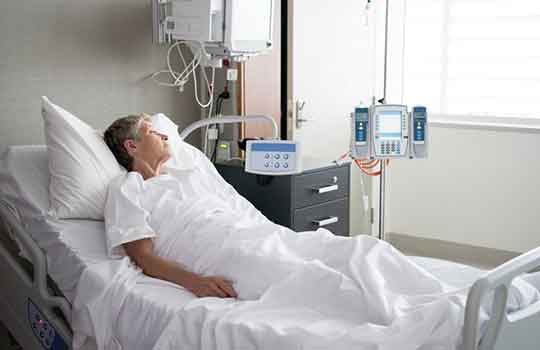Could boredom in patients be a problem that impacts on health outcomes and performance of hospitals, asks Elizabeth Burns.
 Hospitals are excellent at responding to physical suffering, but what about suffering from boredom? For many there are long waits which can get boring. It may sound trivial or luxurious doing nothing, but could boredom be a problem that impacts on health outcomes and performance of hospitals? Is this a hidden malaise of hospital life?
Hospitals are excellent at responding to physical suffering, but what about suffering from boredom? For many there are long waits which can get boring. It may sound trivial or luxurious doing nothing, but could boredom be a problem that impacts on health outcomes and performance of hospitals? Is this a hidden malaise of hospital life?
Many struggle with doing nothing. A study found over two thirds of men, and a quarter of women, preferred electrocuting themselves rather than sitting in a blank room thinking for fifteen minutes. [1] Another study showed almost half our time is spent mind-wandering, with negative mind-wandering associated with unhappiness. [2] The possibilities for negative mind-wandering in hospital must be vast with constant reminders of illness and uncertainty. Normally boredom encourages us to make changes and escape rumination, but options for adults in hospital are limited.
Studies from a decade ago suggests boredom is prevalent in hospitals for over half of patients and yet this has not been addressed. [3] It could be speculated since then that the internet provides limitless opportunities for engagement and interest. However just asking fifty oncology patients about boredom suggests the problem is still widespread. A third felt bored up to half of their awake time while over a quarter felt intensely bored, in some cases all the time. One patient suggested, “boredom has probably been the biggest problem and enemy.” Surprisingly, in the report for NICE on the patient experience, boredom is missed entirely. [4] How could this be overlooked, and why have patients not mentioned boredom? This is despite the focus on patients becoming more involved in their care as shared decision-makers.
Boredom became apparent unexpectedly in my work at University College Hospital where I encourage adults to get creative during cancer treatment. Simple ideas such as doodling and origami help spark conversation, interest, and focus. The most frequent comment about the experience is feeling happy. I was curious about why sessions are so appreciated. One patient explained being very bored in a side-room drove him to creativity. While drawing he felt “fantastic” which “keeps me out of mischief.” If you ask about boredom, it becomes apparent many struggle and need help. For children we provide colourful surroundings, toys, activities, people, and encouragement, but little is available for adults to keep minds occupied and emotions balanced.
Ennui is associated with time passing slowly, a lack of meaning, challenge and focus, and even higher mortality rates. [5-7] Described as the “unengaged mind seeking engagement”, what difference could relieving boredom make? Could an engaged patient become more involved in their own care? Could boredom affect recovery, pain, fatigue, or relations with staff? A paper a decade ago tested pills to relieve boredom in ambulatory care. [8] It did not work.
We need imaginative research into the impact of boredom, not medication. My experience shows even pen, paper, and encouragement brings disproportionate benefit. My long-term aim is for a collaborative “Anti-Boredom Campaign” to help turn waiting into a positive opportunity. In the words of one patient, “a really welcome and joyful distraction from a rather serious business.” The time has come to make the most of precious time in hospital.
Lizzie Burns works once a week as a creative specialist at the University College Hospital Macmillan Cancer Centre. Her work within the Macmillan Support and Information Service is funded by the UCH Cancer Fund. Following a doctorate from the University of Oxford, Lizzie has worked as a science-based artist since 2002 and is now founder of the Anti-boredom Campaign.
1. Wilson TD, Reinhard DA, Westgate EC, Gilbert DT, Ellerbeck N, Hahn C, Brown CL, Shaked A. Just think: the challenges of the disengaged mind. Science 2014; 345 6192:75-77.
2. Killingsworth MA, Gilbert DT. A wandering mind is an unhappy mind. Science 2010; 330: 932
3. Steele R, Linsley K. Relieving in-patient boredom in general hospitals: the evidence for intervention and practical ideas. BJPsych Advances 2015; 21:63-70.
4. Staniszewska S, Boardman F, Gunn L, Roberts J, Clay D, Seers K, Brett J, Avital L, Bullock I, O’Flynn N. The Warwick patient experiences framework: patient-based evidence in clinical guidelines. Int J Qual Health Care 2014; 1-7.
5. Eastwood JD, Frischen A, Fenske MJ, Smilek D. The unengaged mind: Defining boredom in terms of attention. Perspect Psychol Sci 2015; 7:482-495
6. Van Tilburg WAP, Igou ER. Boredom begs to differ: differentiation from other negative emotions. Emotion 2016 Oct 6 (Epub ahead of print)
7. Britton A, Shipley MJ. Bored to death? Int J Epidemiol 2010; 39:370-371.
8. Theobald DE, Kirsh KL, Holtsclaw E, Donaghy K, Passik SD. An open label pilot study of citalopram for depression and boredom in ambulatory cancer patients. Palliat Support Care 2003; 1:71-77.
